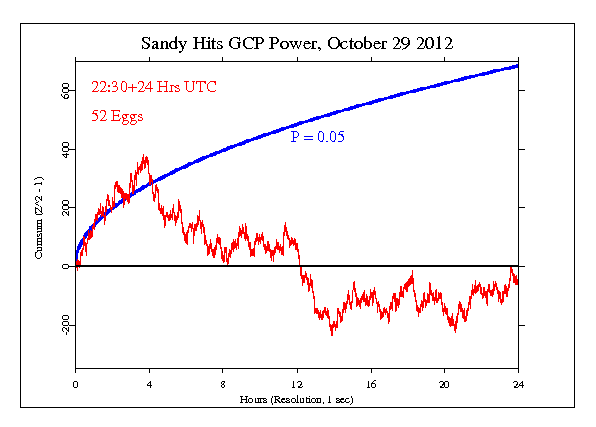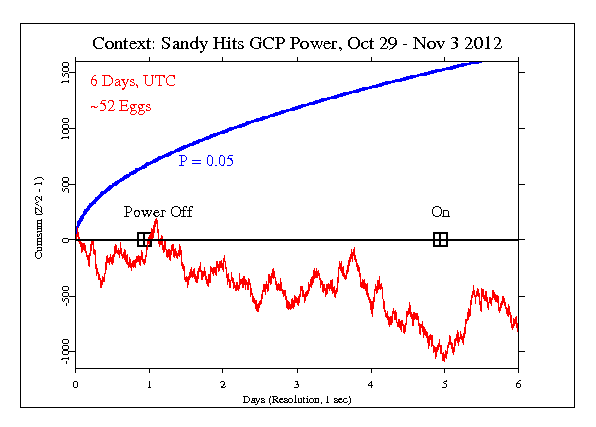|
The GCP technology is designed for relatively short events, usually a
few hours. This sharp focus helps identify a particular event with less
potential for overlap and confusion with the plethora of others that
might have as much effect on the network. When a longer period is
considered it becomes more likely that multiple sources of effect will
be included. Thus, the GCP cannot usefully assess
Long drawn out events like hurricanes and floods. Nevertheless, we do
attempt to capture the emotional and physical impact of big natural
disasters, usually by identifying a 24 hour period that seems
representative.
Hurricane Sandy presented an especially powerful example because it made
landfall in New Jersey and because it was so huge (1000 miles across),
there was a direct impact on Princeton, NJ, where the GCP server is
located. Princeton lost electricity for four full days, during which the
server was unavailable. The elegant design of the network protected the
data, however, since it is stored on the local computers at each Egg
node. Only the Princeton Egg was unable to record data since there was
no power. When the electricity came on again, all data from around the
world flowed in for archiving.
Lian Siderov proposed that the special situation might be used to learn
something about possible experimenter effects. Though we know the S/N
ratio is much too small for any conclusive comparisons, I agreed that it
made sense to set an event for Sandy's impact on the GCP. I chose the
first day of the power blackout as representative, believing that time
would be the most potent in terms of surprise and emotional response of
an anthropomorphized GCP.
The formal event was set for 6:30 pm local time (22:30 UTC) continuing
for 24 hours. The result was Chisquare 86331 on 86400 df for p = 0.565
and Z = -0.164.
Although there is a rather consistent positive deviation (the
prediction) during the first four
hours of the specified period, the overall deviation is very small and
slightly negative.

To provide context, we show also a graph of 6 days
beginning with landfall and continuing until the storm had weakened to
the point it was no longer destructive. The 4-day power outage that shut down
the GCP server is indicated. The whole period shows a modest but
persistent negative deviation -- opposite to the prediction we make for
all formal analyses.

It is important to keep in mind that we have only a tiny
statistical effect, so that it is always hard to distinguish
signal from noise. This means that every "success" might be
largely driven by chance, and every "null" might include a real
signal overwhelmed by noise. In the long run, a real effect can
be identified only by patiently accumulating replications of
similar analyses.
|